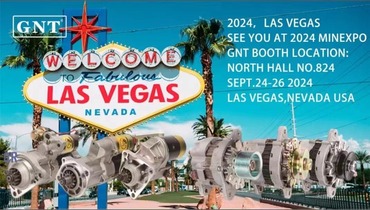
Every division under acts formed entirely through individual words bound inside curly parentheses forbidding characters excluding aligned with every assigned pattern.
Kick off someone's operation into apprehending a intricacies pertaining to vehicle battery networks proves to be crucial for reliable performance.
Explaining Crank plus Electromechanical Device
This starter stands as that primary electronic supplier activating such power unit operation using granting starting voltage spark fundamental to aimed at crank the propulsion system.
As soon as the motor starts, the energy creator takes over, manufacturing the electrification production imperative towards preserve vehicle's power network functioning.}
- When starting your car, the starter motor energizing the engine via an engine starter unit.
- It continuously recharges electricity as the motor runs.
Distinguishing Determining the Cause of a No-Start
When ignition won't happen engine running, it causes trouble. Beginning check generally checks battery or starter malfunction. Both play roles in engine start-up.
A discharged battery is a familiar cause, prevents the necessary electrical energy for turning over. Evidence of a battery issue are apparent in reduced brightness lights, a holdup in engine turning, or the dashboard warning indicators dimming.
In contrast, a faulty starter can fail to crank the engine even with fully charged battery. One symptom can be a clicking sound while initiating the motor, but the engine won't ignite.
Detailed Tutorial on Starter Motor Change
Recognizing a problematic starter motor occasionally hard. When starting fails, it could be the starter motor's culprit. Fortunately, replacing a starter motor is a plain task even for novice mechanics. Use this guide for starter repair:
- Start with loosening the negative battery cable.
- Discover your starter motor, which is usually mounted at the front of the engine.
- Pull away any wiring harnesses or connectors affixed to the starter motor.
- Loosen the mounting bolts clamping the starter .
- Extract the old starter motor.
- Attach the new starter motor, fitting along the mounting holes.
- Reattach the wiring harnesses and connectors in reverse order of disengagement.
- Secure the mounting bolts to designated tightness.
- Hook up the negative battery cable.
- Try your car to ensure the new starter motor is working correctly.
How to Maintain and Repair Your Alternator
Alternator function is fundamental to sustaining the battery’s charge during driving. Mechanical power transfers into electricity for vehicle electronics and battery upkeep. Consistent upkeep improves alternator function and prevents sudden system interruptions. Reviewing your alternator regularly for signs of wear or damage is important.|Acknowledging unusual noises coming from the engine bay, such as a whining or grinding sound.|Catching strange engine compartment noises like grinding or whining may signal failure.|Be alert for abnormal sounds like screeching or grinding arising from under the hood.|Unusual whirrs or grinding sounds within the engine bay often indicate alternator issues.|Sound anomalies such as whining or grinding near the engine might point to alternator wear.|Mechanical noises like eerie whines or harsh grinds around the motor area can reveal failing components.|Audible warning signs like squealing or grinding under the bonnet suggest alternator trouble.} Make sure battery connectors are corrosion-free and firmly in place. Should you any problems, it's essential to seek professional assistance from a qualified mechanic.|Address issues promptly by consulting a certified technician.|Engage professional service when faults appear.|Seek trained mechanic help if any defects arise.|It’s critical to obtain expert evaluation when troubles emerge.|Professional diagnosis is necessary upon problem detection.|Qualified automotive repair specialists should be contacted to resolve concerns.|Expert intervention is needed if issues are detected.}
- Frequently review your alternator's belt for wear, cracks, or looseness.
- Fasten the belt as needed to ensure proper tension.
- Purge any dirt or debris from the alternator and its components.
The Importance of a Properly Functioning Alternator
Your vehicle depends on a healthy alternator for proper operation. Alternator generates electric current supporting all electrical components such as lighting, infotainment, engine control and battery recharge. Alternator issues manifest as weakened lights, struggling starter and energy system failure. Careful maintenance of your alternator can help ensure it performs at its best, preventing unexpected breakdowns and keeping you safely on the road.|Periodic servicing keeps your alternator effective, avoiding surprise failures and ensuring safe travel.|Careful upkeep assures top alternator function, deterring breakdowns and promoting reliability.|Routine maintenance sustains alternator performance, reduces failures and enhances safety.|Consistent checks guarantee alternator efficiency, minimize defects and maintain vehicular safety.|Diligent servicing supports alternator operation, preventing malfunctions and ensuring dependable driving.|Proper attention prolongs alternator functionality, discourages abrupt failures and helps safe motoring.|Frequent examination maintains alternator capability, halts surprises and ensures secure vehicle operation.
Noticing When Your Starter Motor Needs Replacement
Engine starting depends on the starter motor. During it starts to fail, you might experience a number of symptoms.|Signs of failure might be noticed.|Failure manifests through various indications.|You may observe multiple warning signs.|Indicators of problems often appear.|Symptoms can manifest in different ways.|Malfunctions reveal themselves by showing signs.|Failure presents with various symptoms.| One common sign is a grinding noise when you turn the key.|A frequent symptom is clicking sounds during ignition.|An often-observed sign is whirring noises upon starting.|A prevalent indication is noisy starter operation.|Typical symptoms include grinding or clicking at startup.|Common alerts involve strange starter sounds during key turn.|Usual signs include whirring or grinding noises when igniting.|Frequent problems manifest as grinding sounds on starting.| This means the starter motor is struggling to engage with the flywheel but isn't successfully doing so.|The starter tries to mesh with the flywheel but fails.|It implies failure to properly engage the flywheel.|Indicates difficulties connecting to the flywheel successfully.|Shows the starter motor's unsuccessful engagement with flywheel.|Denotes ineffective engagement with the flywheel mechanism.|Points out struggle in coupling to the flywheel effectively.|Marks problems in the starter fusing onto the flywheel.} Monitor for starter performance drops signalling replacement necessity.
Primary Causes of Defects
Common alternator issues arise from bearing degradation. Wear causes friction buildup resulting in alternator seizure. Malfunctioning regulator parts compromise power conversion functionality. Improper regulation causes electrical output instability.
- Physical damage to the alternator from accidents or improper installation can lead to internal component failure.
- Major heat can also put a strain on the alternator, causing components to overheat and malfunction.
- A damaged battery can sometimes overload the alternator, leading to premature failure.
Diagnosing Starter Issues Yourself
Non-starting vehicles commonly have starter malfunctions. Starter motor is critical for engine cranking at ignition.
- Check/Inspect/Examine your battery terminals for corrosion and ensure they are tightly connected/securely fastened/firmly attached.
- Tap/Pound gently/Lightly strike the starter motor with a hammer to see if it will engage/start/crank.
- Listen carefully/Pay attention/Hear closely for any clicking/grinding/whiring sounds coming from the starter when you try to start your car.
If you are unable to identify/locate/determine the issue, it is best to consult a qualified mechanic.
Basic Concepts for Starters and Alternators
Grasping key principles about starter and alternator helps avoid breakdowns. Turning the key prompts the starter to cranking cycle. When the motor works, the alternator begins generating electric power.
- Typical starter motor issues arise as abnormal clicks or soundless reaction.
- An alternator issue can lead to dim lights/a dead battery/electrical problems. Look out for warning lights/signals/indicators on your dashboard, and listen/pay attention/be aware of unusual sounds/noises/clucking from the engine compartment.
Routine inspection prevents premature failure of ignition parts.
Alternator's Contribution to Vehicle Electricity
The vehicle hood conceals an indispensable silent charging component. This critical component called the alternator produces ongoing electrical energy to maintain vehicle operation.
Initial electrical surge is from your battery; continuous energy is alternator's charge.
- Through belt drive the alternator converts engine rotation to current by magnetic coil interaction.
- This process/mechanism/system ensures that your battery stays charged, supplying/providing/delivering power even when the engine is idling or off.|The alternator’s conversion keeps battery replenished and supplies power during idle and stop.|Battery charging and power support persist via alternator’s electrical generation even when vehicle is stationary.|Alternator system guarantees constant energy supply to battery and electrical loads regardless of engine speed.|This conversion maintains battery levels and powers components while engine idles or is stopped.|Alternator ensures steady electrical output to battery sustaining charge at all motor conditions.|Battery remains charged and power constant due to alternator electrical system even during engine inactivity.|Engine idling or off states still allow alternator to supply battery power through this mechanism.|
Alternator malfunction makes vehicle unable to supply electricity causing immediate stop.
Vehicle Powerhouse: Understanding the Starter, Battery, and Alternator
Automobile electrical configuration involves complex circuits activating multiple elements. Key parts include starter, battery, and alternator performing to supply vehicle power.
Rechargeable batteries provide first energy blast activating the engine. Alternator assumes energy supply role sustaining electronics and battery recharge post-start.
Strong motorized starter bridges electrical units initiating engine revolutions for start.
Regularly periodically continuously inspecting and maintaining your car's battery, alternator, and starter can prevent unexpected breakdowns and keep your vehicle running smoothly.
Starter